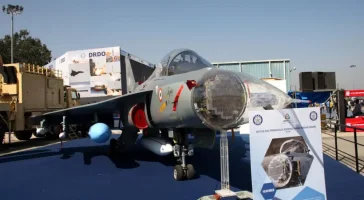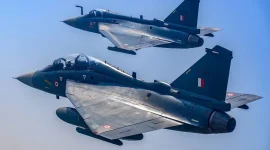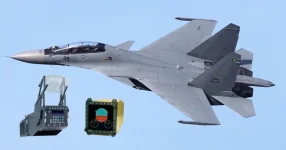- Views: 2K
- Replies: 27
The Indian Air Force (IAF) faces a strategic crossroads as Russia's state-owned United Aircraft Corporation (UAC) confirms the Sukhoi Su-57 fifth-generation fighter jet will be showcased at Aero India 2025 next month in Bengaluru.
This display reignites the debate surrounding India's potential acquisition of the advanced fighter, a discussion that has simmered since India withdrew from the joint Fifth Generation Fighter Aircraft (FGFA) program with Russia in 2018.
India's exit from the FGFA program was primarily attributed to concerns over project delays, cost escalations, and perceived discrepancies in technology transfer.
Following India's departure, Russia continued to develop the Su-57 independently, achieving initial operational capability in 2020. This made Russia one of only three nations globally, alongside the United States and China, to field operational fifth-generation fighters.
Currently, the Russian Aerospace Forces are believed to operate around 27 Su-57s, equipped with advanced weaponry, including the hypersonic Vympel R-37 air-to-air missile, capable of engaging targets at extremely long ranges.
The Su-57's presence at Aero India 2025 is particularly significant given the delays plaguing India's indigenous Advanced Medium Combat Aircraft (AMCA) program. The AMCA, envisioned as India's own fifth-generation stealth fighter, is not expected to enter service before the 2030s.
This timeline puts increasing pressure on the IAF, which is currently operating a fleet dominated by aging fourth-generation fighters like the Sukhoi Su-30MKI and Mirage 2000. The IAF has an authorized strength of 42 squadrons but it is down to just 31.
The evolving security landscape in the region further compounds India's challenges. China's deployment of its Chengdu J-20 stealth fighter along the Indian border, coupled with Pakistan's potential acquisition of China's Shenyang FC-31 (export designation J-35), and the emergence of Turkey's indigenous KAAN fighter, create a complex and potentially volatile environment.
The Su-57, with its advanced sensor suite, stealth characteristics, and multirole capabilities, could potentially provide the IAF with a crucial edge in deterring aggression and maintaining air superiority. The Su-57 is designed for air superiority and attack operations. It has a maximum speed of Mach 2 and a combat range exceeding 1,500 km.
However, acquiring the Su-57 would be a complex undertaking for India. The financial implications of procuring, operating, and maintaining a fleet of Su-57s would be substantial.
Furthermore, the Su-57's combat performance in the ongoing Russia-Ukraine conflict has been described as limited, with the aircraft primarily used for launching long-range missiles from within Russian airspace. This raises questions about its effectiveness in contested airspace.
Perhaps the most significant hurdle facing a potential Su-57 deal is the looming threat of sanctions under the US Countering America's Adversaries Through Sanctions Act (CAATSA).
CAATSA is designed to deter countries from purchasing significant defense equipment from Russia, and India's previous acquisition of the S-400 missile defense system already strained relations with the US. Acquiring the Su-57 could further jeopardize India's strategic partnerships, particularly with NATO allies, who are increasingly wary of Russia's actions on the global stage.
Aero India 2025 will undoubtedly be a crucial platform for discussions between India and Russia regarding the Su-57. Whether these discussions lead to a formal acquisition remains to be seen.
India's decision will ultimately be a delicate balancing act, weighing strategic needs, financial constraints, and complex geopolitical considerations. The decision will not only shape the future of India's air power but also have significant ramifications for its international relationships.



